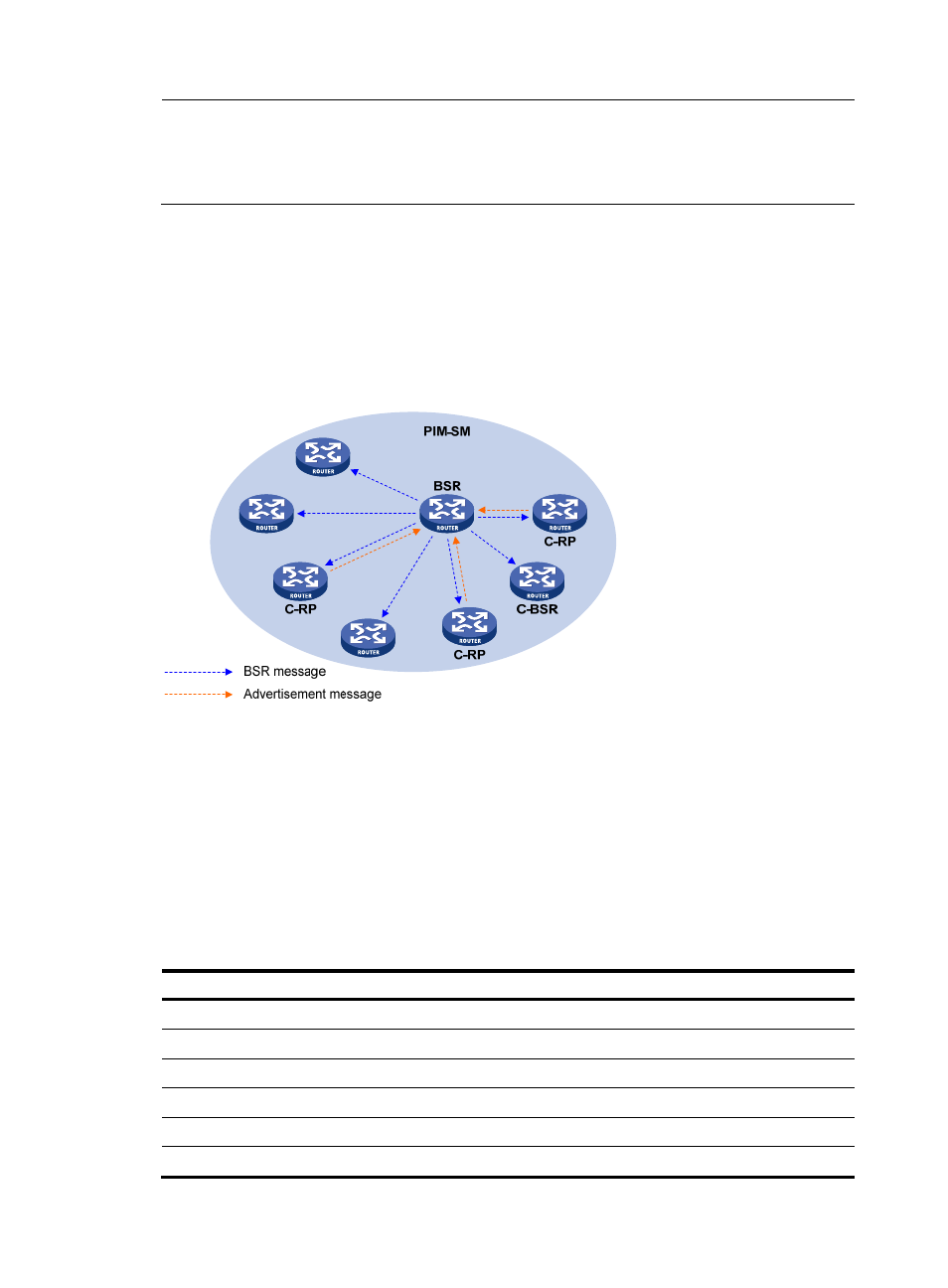H3C Technologies H3C S12500 Series Switches User Manual
Page 130

114
NOTE:
•
An RP can provide services for multiple multicast groups or all multicast groups. Only one RP can
provide services for a given multicast group at a time.
•
A device can serve as a C-RP and a C-BSR at the same time.
As shown in
, each C-RP periodically unicasts its advertisement messages (C-RP-Adv messages)
to the BSR. A C-RP-Adv message contains the address of the advertising C-RP and the multicast group
range to which it is designated. The BSR collects these advertisement messages and chooses the
appropriate C-RP information for each multicast group to form an RP-set, which is a database of
mappings between multicast groups and RPs. The BSR then encapsulates the RP-set in the bootstrap
messages (BSMs) that it periodically originates and floods the bootstrap messages to the entire PIM-SM
domain.
Figure 40 BSR and C-RPs
Based on the information in the RP-sets, all routers in the network can calculate the location of the
corresponding RPs based on the following rules:
1.
The C-RP with the highest priority wins.
2.
If all the C-RPs have the same priority, their hash values are calculated through the hashing
algorithm. The C-RP with the largest hash value wins.
3.
If all the C-RPs have the same priority and hash value, the C-RP with the highest IP address wins.
The hashing algorithm used for RP calculation is "Value (G, M, C
i
) = (1103515245 * ( (1103515245 * (G
& M) + 12345) XOR C
i
) + 12345) mod 2
31
."
Table 8 Values in the hashing algorithm
Value Description
Value
Hash value.
G
IP address of the multicast group.
M
Hash mask length.
C
i
IP address of the C-RP.
&
Logical operator of "and."
XOR
Logical operator of "exclusive-or."
